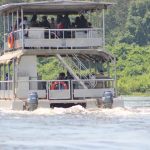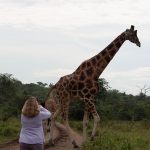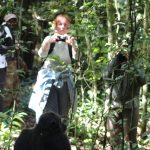Overview

Tribes in Uganda; Ugandans in general belong to a wider range of ethnic groups. The largest being the Bantu who occupy the Central, Southern and Western regions of the country and the non-Bantu speaking group. Who are also divided into the Nilotic and Nilo Hamites. Occupying the North and North Eastern regions of the country.
The history behind the tribes found in Uganda
The precolonial history of Uganda is not well recorded. Since genealogy was the only method employed by the early settlers in the area. At the time of the first exploration of Uganda. There were three main kingdoms, each ruled by a monarch and laws and customs of their own.
It is interesting to note that the kingdoms of Buganda, Kitara (sub-divided into Bunyoro and Toro) and Karagwe are all well documented by early explorers. It is believed that these kingdoms were established around the 16th century. Apparently, before that time, the land was occupied by Bushmen. The Bantu originated from the West coast of Africa, migrating along the Niger River, and occupied the Northern, Central and Western parts of Uganda.
However, the Eastern part of Uganda, occupied some 250 years ago by the Nilo-Hamitic tribes, never formed a kingdom because the people were nomadic and the area was not suitable for agriculture.
Ethnic groups and their origins
There are four main ethnic groups in Uganda, which all have different origins.
The Bantu, by far the largest in number, came from the West and include the tribes of Baganda, Banyankole, Basoga, Bakiga, Batoro, Banyoro, Banyarwanda, Bagisu, Bagwere and Bakonjo.
The Nilotics, who came from the North, include the Lango, Acholi, Alur, Padhola, Lulya and Jonam.
The Nilo-Hamites include the Teso, Karamojong, Kumam, Kakwa, Sebei, Pokot, Labwor and Tepeth, and the Sudanics include the Lugbara, Madi and Lendu.
The Hamites mainly consist of the Bahima.
These tribes engaged in the long distance trade with the Arabs and some of their neighbors.
The languages
Belonging to many ethnic groups, Ugandans speak over 30 different African languages. English and Swahili are the country’s official languages.
However, Swahili is a useful communication link with the country’s neighbors; Kenya and Tanzania.
The largest group in Uganda (around a fifth of the population) are the Baganda. Who live in the Kampala region and speak Luganda.
Meanwhile, other Bantu-speaking groups include the Banyankole, Batooro, Banyoro and Basoga. To the East and North are groups of Nilotic/Cushitic origin, including the Teso, Karimojong, Acholi and Lango.
The common pre-fixes of ‘Mu-’, ‘Ba-’ and ‘Bu-’ are used for ‘a member of’, ‘a people’ and ‘the land they occupy’. So for example, a Muganda is a member of the Baganda, who live in Buganda. The name of the country comes from the fact that in Swahili, the prefix ‘U-’ is used instead of ‘Bu-‘.




